We'll be back soon...
Andy Yearley still vividly remembers the journey he made from the Isle of Lewis to Vietnam 20 years ago. Travelling with a film crew from Mac TV in Stornoway, he had what he calls “the most unforgettable, vivid and surreal week of my entire life”.
Born in 1973, Yearley was one of thousands of young Vietnamese children evacuated from the country as the Vietnam war finally ended, culminating in a huge, US-led initiative in April 1975 called Operation Babylift. The children, many transported on military aircraft, were adopted by families in the USA, Australia and across Europe. Yearley’s Vietnamese name is Nguyen Tang; adopted by a Scottish couple, he grew up as Andy in a small, seaside village on Lewis, knowing virtually nothing about his biological family. The aim of that 2004 journey was to try and find them.
“A normal tourist visiting Vietnam finds stimulation overload, but in my case it was my first time seeing the country of my birth, potentially finding blood family, surrounded by a Gaelic TV crew, and escorted by a high up official from the Vietnamese government,” recalls Yearley. “Surreal was a total understatement.”
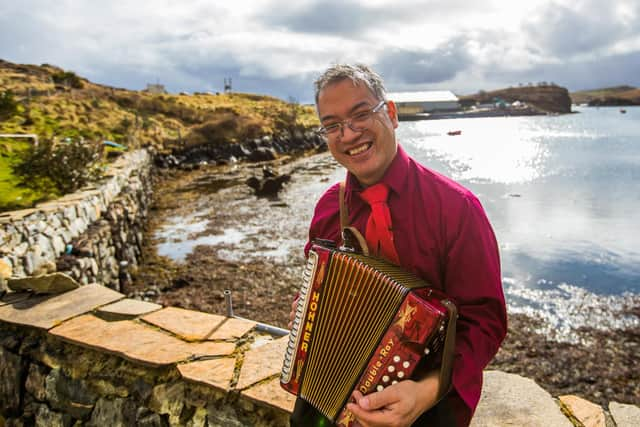
Yearley is a professional musician who has performed at Celtic Connections, HebCelt, and other high profile Scottish events, as well as teaching music to children. In Saigon, he remembers visiting a music shop where the shopkeeper talked at him for half an hour in Vietnamese. Not understanding a word, Yearley eventually decided to respond in Gaelic, just to see what would happen. “I said something along the lines of "Ciomair a tha thu? Tha mi duillich, a bheil Gaelic agad?" (how are you, sorry do you speak Gaelic?). The look on her face!”
Yearley never found any members of his Vietnamese family, but thanks to orphanage staff he was at least able to identify and visit the street where he had been found as a baby, next to a dead woman thought to have been his mother. “It was 5am and the street was buzzing with activity. To a lot of folk, their first known location is a hospital bed, or a birthing pool. Here I was at mine – a bustling, beautiful street with overgrown foliage everywhere, children, cats and dogs running wild, and a barely discernible old train track running through it. I quite like the fact that this last day was not filmed. It was a very personal moment.”
Two decades later, Yearley is one of the creators of Precious Cargo, a new theatre show coinciding with the 50th anniversary of Operation Babylift. Developed in Uig on the Isle of Lewis, Precious Cargo is now set for a full Edinburgh Fringe run at Summerhall following its debut performance at An Lanntair in Stornoway at the beginning of July.
The show grew out of a chance meeting in autumn 2021. Australian actor Barton Williams, also a Vietnam war orphan, was visiting Lewis as one of the cast of Silent Roar, a feature film about Hebridean surfers that was being shot in Uig and would ultimately go on to open the 2023 Edinburgh International Film Festival. Introduced by one of the film crew, Williams and Yearley made an immediate connection. Both had been raised by white families, growing up as virtually the only Asian child in small, overwhelmingly white communities, with no connection to their Vietnamese language or heritage. Both had later travelled back to Vietnam in the hope of finding their biological families but had returned home with no answers – a common experience for adoptees, so much information having been lost in the chaos of war.
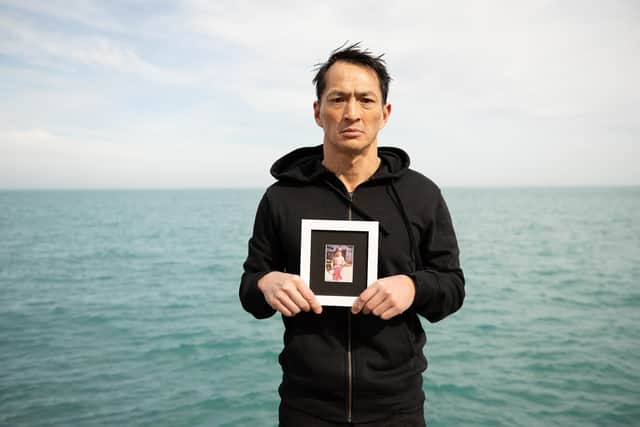
Williams had been telling his own story for a while in various ways, in a children’s book, a short film, and in a solo stage show which he had developed as far as a work in progress performance at the Vaults in London. When he met Yearley, though, something clicked. “Andy understood the displacement I felt, looking Asian from the outside but something else inside,” he says. “He’s me, but Scottish.” Precious Cargo has now become international in scope, telling not just Williams’ story but those of five other adoptees living across the world, including Yearley, who also composed the musical score. All of the adoptees featured in the show grew up in very different places and circumstances, from rural Iowa to small town England, but with a powerful shared experience.
Operation Babylift may have saved many lives but it was controversial even in 1975. The first flight crashed a few minutes after take-off, killing 138 people including 78 Vietnamese children. Photographs from the time show rows and rows of babies being flown to their new Western homes in boxes. There were questions as to the USA’s motivation; to what extent was it a public relations exercise after an infamously disastrous war? In one of several eye-opening historical details, Playboy founder Hugh Hefner provided his private plane, the ‘Big Bunny’, to transport 41 Vietnamese orphans from a military processing unit in San Francisco to New York; there are photographs of Playboy Bunnies carrying the babies off the plane.
Some of the adoptees weren’t orphans at all, however, just children separated from their Vietnamese families, and the situation was fraught with cultural misunderstanding. There are stories of impoverished Vietnamese mothers effectively using orphanages as a place to keep their children safe, then returning weeks later to find they had been taken out of the country. As one later put it, “To understand my story, think you are caught upstairs in a burning house. To save your babies’ lives you drop them to people on the ground to catch. It’s good people that would catch them, but then you find a way to get out of the fire, too, and thank the people for catching your babies, and you try to take your babies with you. But the people say, oh no, these are our babies now, you can’t have them back.”
While Vietnam war adoptees mostly express immense gratitude for the lives they have had, there is also a sense of displacement, loss, and perhaps survivor’s guilt. “The first time I ever met adoptees it felt like group therapy,” says Rachel Gregg Galvez, an adoptee who grew up in the suburbs of New York and whose story features in Precious Cargo. She is co-founder of the South East Asian Coast to Coast Foundation, a non-profit company that helps reconnect families separated by the war. “Some of the adoptees I’ve worked with, on the surface they’ve had a great life but underneath they have this sadness and emptiness.”
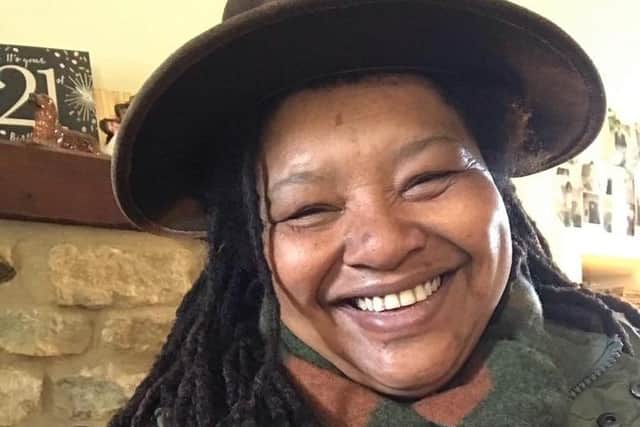
Vietnam war adoptees also face a distinct and complex form of racial prejudice. A recurring theme in Precious Cargo is that Barton is continually judged by white people – from school friends to casting directors – as part of a group to which he feels little connection. Jennifer Adams, who was adopted by a family in Iowa, has a formative childhood memory of not being allowed to play at a white friend’s house because their father had served in the Vietnam war and didn’t want her there. Years later, as a teenager, she was selling snow cones at a community event when she saw the man again. “He came by and he very intentionally bought a snow cone from me, and I took it as his apology. He didn’t say I’m sorry and I didn’t need him to, I just needed to feel like he could acknowledge my existence.”
Toni Angelique Harrison, another adoptee whose story features in Precious Cargo, grew up as one of very few Black children in Biggleswade, a small town in Bedfordshire. Harrison says she didn’t understand that she was seen as a Black person until she was 15 or 16.
“As a teenager I didn’t like to talk about Vietnam,” she says. “I was only seen as Black, never Vietnamese.” She ended up internalising the racism in Hollywood movies about the Vietnam war. “In the films it was the African-American GIs who were shown killing Vietnamese people and raping Vietnamese women. It made me really angry at them. Racism is everywhere. It was only when I met some real GIs as an adult that I found out they were desperately looking for their Vietnamese families too.”
Harrison finally managed to find her biological father, an American ex-drill sergeant called Lee Butler, via a DNA search. Their emotional meeting was captured in a BBC news report in 2018; she also met other American relatives who had been previously aware of her existence but had no way to find her. It was the first time in her life, she says, that she’d been in a family photo with people who looked like her.
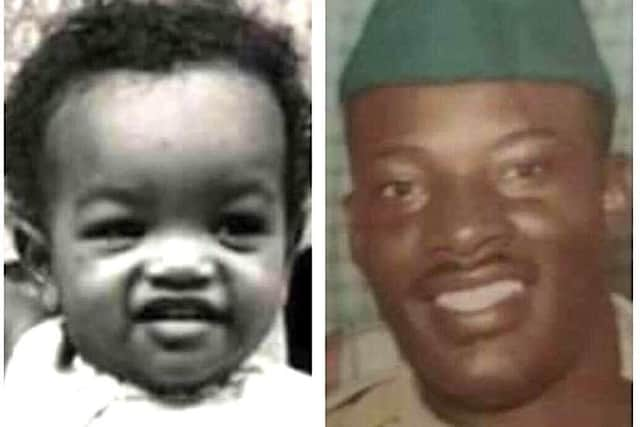
The increasing number of DNA tests, particularly in the USA, has resulted in a few reunions like this. Many Vietnam war adoptees were the product of relationships between American soldiers and Vietnamese women. Butler was with Harrison’s biological mother for two years, she discovered, but had to leave her behind when the army sent him back to the USA. Vietnamese parents are harder to track down, but Harrison remains determined to find her mother and hopes that sharing her story in an Edinburgh Fringe show will help with this.
“There are more success stories now, orphans finding fathers or siblings by using DNA companies like Ancestry or Family Finder,” she says. “But our biological Vietnamese mothers can’t afford to spend $100 on a DNA test. In Vietnam it could be a month’s wage. I set up a music festival called Free Spirit and we raised enough money to send 50 DNA kits to Vietnam. But time is not on our side. Our biological fathers and mothers are ageing or dying. The memories of the war are dying.”
Indeed, as Operation Babylift approaches its 50th anniversary and adoptees adjust to middle age and mortality, there is a strong sense of time running out. Williams’ beloved adopted mother died in autumn last year. His grief at her loss, he says, is part of the reason why he was so determined to tell this story now, a story that has become as much about looking for peace and acceptance as it is about continuing to search for lost relatives.
Like Yearley and Williams, Jennifer Adams returned to Vietnam as an adult a few years ago. She describes the experience as “life-changing” even though, like them, she found no trace of her birth family. But she wasn’t expecting answers, she says; she didn’t know her birth name or birth date and the orphanage she had been in no longer existed. She just wanted to see the “mother country” for herself. “Growing up, all I’d ever seen about Vietnam was through the lens of the US military, or Miss Saigon,” she explains. “I wanted to have a relationship that wasn’t through someone else’s lens or filter.”
Her description of her journey home is an eloquent summary of the Vietnam adoptee experience, the constant challenge of finding a place for yourself somewhere between different identities.
“When I came back from Vietnam after a month I remember coming in through LAX (Los Angeles International Airport) and there was a ginormous US flag and I started crying,” she recalls. “I’m not this overly patriotic person but seeing that flag represented to me ‘I’m home, I’m on firm ground again.’ That surprised me to be honest. I think this is probably a common experience for many transracial adoptees. I don’t get the advantage of having everything all in one. If I allow myself I could tell myself that I’m an outsider wherever I go. I was definitely an outsider in Iowa and in a way I was an outsider in Vietnam, they could take one look at me and know I wasn’t raised there. I’m just bigger, I have a different build. But I prefer to think of myself as an insider. In the US I find my commonalities, and I did the same in Vietnam.”
SCOTLAND: Precious Cargo is at An Lanntair, Stornoway, 6 July (www.lanntair.com), then Summerhall, Edinburgh, 1-26 August (www.summerhall.co.uk). Tickets for all performances are on sale now.
NEW BOOK (in French)
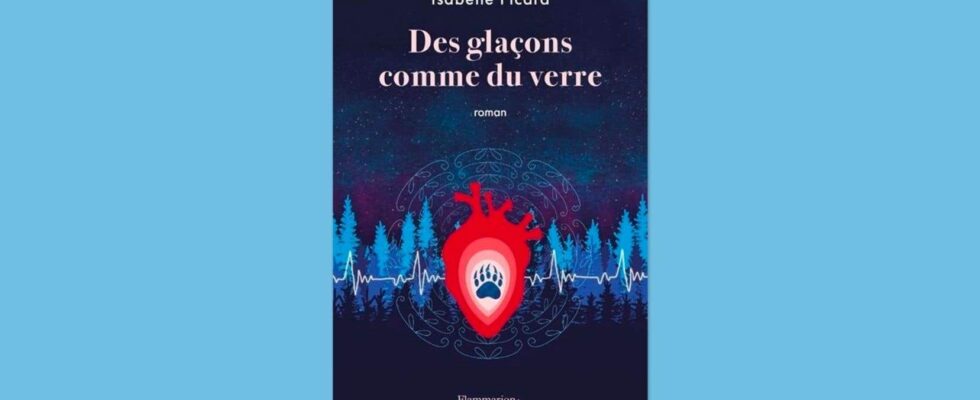
During the Sixties Scoop, thousands of Indigenous youth in Canada were taken from their reserves by child welfare services to be adopted or placed with non-Indigenous foster families. With sensitivity, the novel Ice cubes like glass evokes this dark part of the country’s past, which has left immense scars within communities. Inspired by Canadian history as well as that of her ancestors, ethnologist and author Isabelle Picard, originally from Wendake, immerses us in the pain of a Huron father, Henri. The latter sees his family being divided up by the government while remaining powerless. Through this poignant story, the writer succeeds in injecting depth into the many characters, such as the patriarch, his wife, Belle, and their host of children. The eldest, Liliane, is particularly touching because of the fight she leads to keep her family afloat. A necessary work, which remains captivating until the end.
Review: Florence Morin-Martel ★★★ 1/2 : https://actualnewsmagazine.com/english/ice-cubes-like-glass-isabelle-picard/
"...In this case, a Native child was legally adopted by a non-Native mother—but the mother then tragically died. Ordinarily, in such a circumstance, family members or friends could become legal guardians of a child through a simple court order. But that effort was blocked in this case by the tribe, which declared the child a “ward” and demanded that state judges hand her over, so that the tribe could place her with adults who are of the “right” race. Now, an Arizona appellate court has been asked to decide whether the tribe was acting within its legal authority.
As we explain in our brief, the rules of jurisdiction are part of the bedrock idea of due process. Courts are only allowed to decide cases involving people who have some connection to that court—and the fact that a person fits one racial profile rather than another is certainly not good enough. A few years ago, a federal court criticized tribes for engaging in “jurisdictional gamesmanship” in cases involving ICWA. And this case is just the latest example.
Sadly, these “games” are no fun for the kids themselves. ICWA was supposed to protect the best interests of Indian children. But today it frequently blocks Native children from getting the care and protection they need—thanks in part to the way many tribal government officials use it to expand their power, rather than to benefit the kids involved.
Read our brief here. You can learn more about our work defending Indian children against ICWA’s unjust burdens here.
SOURCE: https://www.goldwaterinstitute.org/defending-indian-children-from-tribal-courts-jurisdictional-games/
**How this little girl was adopted by a NON-NATIVE MOTHER is also a question that needs to be answered... ICWA is federal law yet these adoptions are still happening; we need to ask: how? Trace
BOOK Excerpt:
Dead Indians
Ok, we are going to start here with some dots. You and I will connect them.
In one year, 1851, the United States paid out more than $1 million in bounties for Indian scalps. (We’d be really dead Indians then.) Pequot scalps? The bounty was $100 in colonial times. $100 is like a million dollars today, right?
Figure 4 1863 https://nativenewsonline.net/opinion/america-s-real-longest-war-was-the-conflict-against-indigenous-americans“…We must not shy away from the past and the things that have hurt us. We must not bury our truths. We must embrace and remember who we are and who the Great Creator intended us to be. Indian people have carried a heavy burden and responsibility. It is only with the preservation of our cultural identity and language will we find our way back to the people we were meant be. It is for these reasons, preserving our culture and helping our ancestral memories to live is so very important. Especially at this time. For if not now, then when will we wake up and regain our freedoms, inside ourselves? Our heritage and culture are what makes us Indian people. We have a responsibility to our youth and to the future generations to show them who they are. Children will always be representative of our own actions.”—Moses Brings Plenty (Oglala Lakota) He’s a musician in the band Brule (Paul LaRoche is an adoptee). Moses is an enrolled tribal member from the Pine Ridge Oyate (Reservation). He’s known for his recurring role on Sheridan’s Yellowstone, as well as the role of Ottawa Jones in Showtime’s The Good Lord Bird. He has also has portrayed “Crazy Horse,” “Sitting Bull,” and many other historical Indian warriors. He also serves as American Indian consultant/producer on many of Sheridan’s productions, where he ensures the authenticity of all American Indian storylines, set design, hair and make-up, and costumes.
Figure 5 CLIPPING, Minnesota, 24 October 1897 https://cdnc.ucr.edu/?a=d&d=LAH18971024.2.212 $100 paid for one scalp in that county and $200 for another… “Suppressing Indians War?” Over SEVEN THOUSAND DOLLARS for SCALPS? ($7,870.06 in 1897, today’s dollar value = $260,110.00)
Yes, for 500+ years it’s been an ongoing crime against humanity, genocide, collecting scalps, bounties for dead Indians, slavery, then murder the truth and collect our bones.
Here is one more example:
It was so simple (too simple) to use “disease” for massive die-offs of Indian people (for their lack of immunity to germs) (yeah, right), instead of calling it what it was: germ warfare and murder. Just look at Lord Jeffery Amherst. (Right now I know scholars investigating—many imported British poisons produced massive deaths when victim’s bodies looked like small pox that had killed them… clever, right?) Among the damning evidence are letters written in 1763 between officers of the British military detailing plans to send a plague among the “vermin” to eradicate them. READ: https://medium.com/@alhakofi/yes-white-americans-purposefully-infected-native-americans-with-smallpox-ed5b913a235b
JAMES KIRKER: SERIAL KILLER SCALP HUNTER? July 6 1846 Massacre
Reckoning 1 https://en.wikipedia.org/wiki/List_of_Indian_massacres_in_North_America
(Kirker KILLED and SCALPED 130 men, women and children.)
They perfected their guns and poison on our bodies. They made war on us. They wiped out entire villages. Giving diseased blankets to expose First Nations people to smallpox is pretty well-known; it created a decisive advantage in war and conquest against Indigenous People everywhere. The weaponization of “pathogens” like small pox and “poisons” in tainted alcohol (like wine) (early bio-weapons) have been a coveted area of military machinery for a very long time….a very very long time.
MORE SOON
(request a free pdf of this entire book: tracelara@pm.me)
George Littlechild, Here I Am- Can You See Me?
About the Artist:
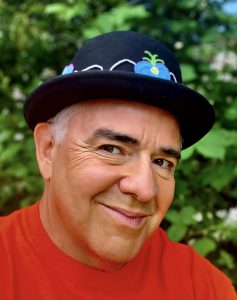
Artist: George Littlechild
Photo: Courtesy of the artist
George Littlechild has had numerous solo and group exhibitions. His art has been exhibited in Canada, the United States, Japan, Australia, Tasmania and Europe. His books and art have won numerous awards and scholarships. To date he has created hundreds of artworks, which hang in public and private collections around the world.
Littlechild was born in Edmonton, Alberta on August 16, 1958. The son of a Plains Cree mother and a Canadian Celtic father, Littlechild was taken from his home as part of the 60s scoop and was raised by foster parents in Edmonton. He received a diploma in art and design from Red Deer College in 1984, and a BFA from the Nova Scotia College of Art and Design, Halifax in 1988. He also received an Honorary Doctorate Degree from the University of the Fraser Valley. His socially charged mixed-media paintings are often made in response to political movements, societal concerns such as reconciliation and reclamation, as well as personal history.
“In my work, I am committed to righting the wrongs that First Nations peoples have endured by creating art that focuses on cultural, social and political injustices. As an artist, educator and cultural worker, my goal is a better world. It is my job to show the pride, strength and beauty of First Nations people and cultures, and contribute to the betterment of mankind.”
SOURCE: https://aggp.ca/exhibitions/here-i-am-can-you-see-me/
Giving remembrance, recognition, honour and validation to the thousands of innocent children that nobody is able to recognize as they stand amongst their fellow residential school students in the photographs… these children are finally acknowledged, and work begins to recognise and remember these lost souls.
“This work involves a series of twenty-two drawings of First Nations children who perished while attending residential school in Maskwacis AB. The title of work is called “Here I am – can you see me?” I want to give remembrance, recognition, honour and validation to the thousands of innocent children that nobody is able to recognize as they stand amongst their fellow residential school students in the photographs, all but forgotten in the museum archival collections. In this manner I seek to legitimize their lives and restore a modicum of dignity and importance to their short existence in the world.” – George Littlechild
REGIONAL- Starting July 1, Minnesota-born adoptees, 18 years
and older, will have new access to their original birth records, a move
that promises to unlock deeply held questions about their biological
heritage. This access is part of a law passed last year which no longer
allows birth parents to conceal their identities from adult adoptees.
After
an adoption in Minnesota, birth records are changed to show the new
name of the adopted person and the adoptive parents, and the original
birth records and all related correspondence are sealed, making the
records confidential and only accessible under certain provisions laid
out in state law. Access to the records has prioritized the specified
intentions of the birth parents to restrict or share the information.
But
now the original birth record will be available not only to adult
adoptees, but also to an adoptee’s legal representative or relatives if
the adoptee is deceased.
Noncertified copies of original birth records may also be released to:
The
law also introduces a contact preference form for birth parents,
allowing them to indicate their openness to being contacted. This form,
which includes space for a brief message, will accompany the released
birth record, though the decision to initiate contact rests solely with
the adoptee. Birth parents retain the right to alter their contact
preferences at any time.
Gregory Luce, a Minneapolis attorney and adoptee, framed the matter as one of human rights.
“I
think people are finally recognizing the human right to know who you
are and where you came from,” he said. “And making adoption secret in
this way is just an anachronism. It’s a human rights issue. It’s found
its day, it’s found its advocates, and it is currently now a real
movement.”
Part of the change is being driven by DNA and the increasing knowledge base about the role of genetics in influencing people’s physical, behavioral, and psychological traits, including genetically-linked health conditions. A heightened societal interest in genealogy has also informed the debate over open records, particularly with the proliferation of large voluntarily DNA databases maintained by companies like Ancestry that will find genetic matches with others in the database. Also important in the shifting norm has been the increasingly common practice of open adoption, where the birth parents’ identities are acknowledged from the very outset of the adoption process and open communication and relationships are established between them and the adoptive parents and the adoptee.
SOURCE: http://www.timberjay.com/stories/birth-records-open-to-adult-adoptees-july-1,21443
Native adoptees: There are SO MANY OF US, so please get the form and get it filed! You might be from Canada, via ARENA.
Trace (I am!)
don't forget THE COUNT 2024: https://thecount2024.blogspot.com/
 |
But in a lawsuit now before the U.S. District Court in eastern Virginia, the Winnebago Tribe of Nebraska argues Army officials are violating this federal law by delaying the return of two tribal members’ remains. Samuel Gilbert and Edward Hensley died as teenagers over a century ago while attending the nation’s first government-run Indian boarding school. A hearing in the case is set for July. In its filings to the federal court, the Winnebago Tribe objects to the bodies remaining at the Carlisle Barracks Main Post Cemetery in Pennsylvania, and seeks their return for culturally appropriate burials. Defendants include the U.S. Army, the Office of Army Cemeteries, and three employees who oversee the cemetery, which is located on the grounds of the Carlisle Indian Industrial School. |
Today, our guests are Sarah Reinhardt and Louise Browne, who host “Adoption: The Making of Me,” a podcast focused on adoptees’ perspectives, highlighting the often overlooked side of adoption narratives. Our conversation delves into how the adoption industry, driven by a multibillion-dollar market, prioritizes the narratives of adoptive parents, sidelining the voices and experiences of adoptees. We discuss the societal expectations placed on adoptees to feel grateful despite the complexities of their experiences, including feelings of loss, identity issues, and the challenges of connecting with their biological roots. Furthermore, the dialogue touches on systemic issues in adoption practices, such as the lack of access to original birth records for adoptees. Through their stories and insights, Sara and Louise stress the need for greater understanding, reform in adoption practices, and more inclusive conversations that give adoptees a platform to share their experiences and identities.
“I think you can do both. You can love your family. And you can also want to know your other family and your roots and who you are. It’s like an inherent right, I think, to know who you are because we strive for it. Like we may not know we’re searching, but we are always, because you have like this, this hole that’s missing. And you’re taken from your mother. It’s a strange scenario if you think about it, and you put somewhere else. No one talks to you about it, and you try to navigate the world. And so all these little subtle things growing up affect a lot of people.” ~Louise Browne
Sarah Reinhardt is a co-host of “Adoption: The Making of Me,” a podcast by and for adoptees. She is a writer, empty-nester, OCD dog parent, and works in Public Media in Kansas City, MO. Sarah hopes her voice will help resonate with other adoptees facing similar issues. Currently, she is working on a book of humorous essays that follow the theme of searching for identity.
Louise Browne is a co-host of “Adoption: The Making of Me,” a podcast by and for adoptees. Louise works for the executive leadership team in digital banking. She is working on a YA novel and has written two children’s books along and several poems. Louise lives along the Central Coast of California with her husband, Bill, and their dog, Gracie. She has a grown son who lives in Los Angeles. She is trying to change the narrative of adoption to include the voices of adoptees and to help change the way adoption is run as a business.
Over the past four decades, Lisa Meeches has produced countless acclaimed films and television programs. She tells Face to Face (APTN) there are hopes to renew the series Taken, which told the stories of missing and murdered Indigenous women and girls.
This man may live in the middle of the Reservation but he has a better understanding of what is going on in the world than most people living in the cities.
INTRODUCTION
|
L |
et’s start out with a QUIZ: how many Indigenous people were on Turtle Island (now North America) before 1490?
100 million? 10 million?
No one knows. What we do know—millions did live here. Then millions die here. Many Millions.
By the end of the 19th century, writes David E. Stannard, a historian at the University of Hawaii, Native Americans had undergone the “worst human holocaust the world had ever witnessed, roaring across two continents non-stop for four centuries and consuming the lives of countless tens of millions of people.”
I read Stannard’s book—you should, too. [American Holocaust: The Conquest of the New World; David E. Stannard; Oxford University Press, 1993]
Maybe all those museums could give us an accurate count in their bone collections?
Question 2: What do you know about Columbus who sailed the ocean blue in 1492…?
The primary outcome of Columbus’s voyage to the new world was the enslavement of hundreds of thousands of Native Americans and the pilfering of 45,000 tons of gold and silver (valued at £10 trillion in modern currency).—The History of the World Part 5—Age of Plunder, BBC (2018) Film Review by Dr. Stuart Bramhall
Looting, too? Well that’s not good. In 1492 Columbus, the real-life-slave trader-pirate, was capturing humans for Spain, and lands three boats in Hispaniola. (Carib People say Columbus, an Italian guy working for Spain, was lost at sea.)
Question 3: Who came next? (This is up for serious debate.)
Claims were made for the sighting on some part of Canada’s Atlantic coastline by the Irish monk St. Brendan in the sixth century. However, archaeological excavations at L’Anse aux Meadows near the northern tip of Newfoundland suggest Norsemen were the first Europeans to see Canada in the late 10th and early 11th centuries. These remains show that the earliest sighting was probably made by Bjarni Herjolfesson in 985 or 986; and about 1000, Leif Ericsson landed in the first of a series of expeditions, in the establishment of a short-lived Norse settlement. [https://www.thecanadianencyclopedia.ca/en/article/exploration]
Some speculate that seamen from Bristol (British Isles) reached Newfoundland, or thereabouts, in the 1480s, BEFORE the Columbus’s voyage of 1492. Next: John Cabot’s English expedition of 1497 as the first known voyage to mainland North America. Jacques Cartier’s arrival was in 1534.
On three ships the first (French) Huguenots arrived in 1564, 56 years before the Mayflower. They were weary of the never-ending war between Protestants and Catholics back home in France. Near what is now Jacksonville, Florida, with the help of a local tribe, they built triangular Fort Caroline. But Spain had already claimed Florida and most of everything else in North America. When the King of Spain heard about the Huguenot fort he sent an army to erase them and replace them with the Spanish colony St. Augustine. The Huguenots courageously sailed out to attack the Spanish at sea but a hurricane dashed their ships against the Florida coast. Of course, the Huguenots failed. https://newtopiamagazine.wordpress.com/2012/10/15/the-intelligencers-and-the-fifth-moon-of-jupiter-alchemy-in-the-american-colonies/
I think they’ll argue about these claims for the next 500 years.
By the way, there was contact before the British, French, Dutch and Spanish made their journeys across the Atlantic or Pacific Oceans to plant their flags… long before. Jack Forbes (Powhatan-Renape) wrote about this in THE INDIAN IN AMERICA’S PAST in 1964. He found evidence that five beggar Buddhist Priests were here in 458 (A.D.) so Indigenous People survived that earlier contact but someone merely forgot to jot it down for future historians, I guess.
Question 4: Who came next? (HINT: Pocahontas) (Don’t get me started on those myths.)
Consensus is 1585 in Roanoke, Virginia. Then in 1607, the British established the Jamestown Colony of Virginia and this proved to be the beginning of the end for the Powhatan Confederacy, and 30+ tribal nations. Then other invaders come ashore: in 1630 in Plymouth, Massachusetts a boat load of Pilgrims arrive on the Mayflower. Can we trust the boat people to give us accuracy on what happened? Nope.
Trudell sums it up…
“…Historically, we went from being Indians to pagans to savages to hostiles to militants to activists to Native Americans. Its 500 years later and they still can’t see us. We are still invisible…. They can’t deal with the reality of who we are because then they’d have to deal the reality of what they have done… So they have to fear us, not recognize us, not like us… The very fact of calling us Indians creates a new identity for us, an identity than began with their arrival. Changing identity, creating a new perceptual reality, is another form of genocide. It’s like severing a spiritual umbilical cord that reaches into the ancestral past. The history of the Indians begins with the arrival of Europeans. The history of the People begins with the beginning of the history of the People… The history of the People under attack is not very long, in an evolutionary context not very long, it’s only 500 years.”—the late John Trudell (Santee Sioux)
BONUS QUESTION: How many more ways to die? Besides germ-warfare? Scalping parties? Bounty Hunters? 1,000+ massacres? The invaders enslave Indigenous people. (I was told Natchez tribal peoples were shipped by boat, in chains, to silver mines in South America.) In 2024, there is MUCH MORE on this topic being written…
(more coming)

GO TO: https://blog.americanindianadoptees.com/ for updates and news. THIS BLOG cannot be updated...